 |
 |
 |
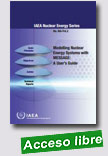 |
Modelling Nuclear Energy Systems with MESSAGE: A User's Guide
IAEA Nuclear Energy Series, 2016, 126 p.
Assessing nuclear energy transition scenarios requires appropriate modelling tools. The IAEA tool Model for Energy Supply System Alternatives and their General Environmental Impacts (MESSAGE) is described in this publication. The tool simulates the development of a complete energy system and provides a convenient platform for modelling and analysing nuclear energy systems (NES), as it can efficiently model
|
nuclear technologies with their specific features. Among other things, the tool can help produce a description of an entire NES with time dependent parameters for long-term planning; confirm the feasibility of a NES through correlation and consistency of all NES components, taking into account all constraints and boundary conditions imposed on the system; balance fissile material in a close fuel cycle and determine fuel cycle requirements. In addition, it assists the user in the choice of alternatives by comparison of different options relating to fuel requirements and volume and toxicity of waste. The publication provides a detailed guidance on how to build mathematical models representing complex nuclear energy systems within the framework of the MESSAGE tool.
Extraído de: http://www-pub.iaea.org/books/IAEABooks/10861/Modelling-Nuclear-Energy-Systems-with-MESSAGE-A-User-s-Guide
|
 |
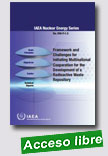 |
Framework and Challenges for Initiating Multinational Cooperation for the Development of a Radioactive Waste Repository
IAEA Nuclear Energy Series, 2016, 45 p.
This publication is concerned with radioactive waste that requires geological disposal. It discusses the partnership arrangements necessary for the development of a multinational repository for disposal of this waste, but it also emphasizes that countries should not rely solely on a multinational solution and should in addition have coherent |
national plans for disposal (a dual track strategy). The publication focuses on multinational approaches based on the IAEA scenario for cooperation among countries in joint projects for the establishment of a shared geological repository. It describes the phased approach that would be needed, indicating the decision processes to be undertaken by partners in the multinational project, both within a national context and in the scope of the joint endeavour. It highlights a wide range of legal and institutional aspects, including the contractual obligations among partners, the economic and financial arrangements, liabilities, nuclear security, regulatory and legislative aspects, waste transportation arrangements, and social issues. It also addresses the uncertainties and risks involved in the implementation of a multinational repository.
Extraído de: http://www-pub.iaea.org/books/IAEABooks/10912/Framework-and-Challenges-for-Initiating-Multinational-Cooperation-for-the-Development-of-a
|
 |
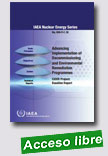 |
Advancing Implementation of Decommissioning and Environmental Remediation Programmes: CIDER Project: Baseline Report
IAEA Nuclear Energy Series, 2016, 99 p.
Despite significant progress having been achieved in recent years, much remains to be done in terms of addressing the legacies from the early development of nuclear energy, including the dismantling of redundant research and fuel cycle facilities, research reactors and power plants, and the remediation of sites affected by past uranium mining and
|
processing operations. Some countries are moving forward with dealing with these legacies, and accordingly have built up appropriate technical resources and expertise, but many national programmes still face very significant challenges. This publication discusses the barriers that prevent the implementation of decommissioning and environmental remediation (D&ER) projects and provides potential solutions to overcome the identified barriers and thereby facilitates a better implementation of D&ER programmes.
Extraído de: http://www-pub.iaea.org/books/IAEABooks/10993/Advancing-Implementation-of-Decommissioning-and-Environmental-Remediation-Programmes-CIDE
|
 |
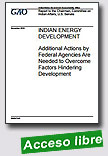 |
Indian tribes and their members hold considerable energy resources and may use these resources to provide economic benefits and improve the well-being of their communities. However, GAO and others have found that Indian energy development is hindered by several factors, such as a complex
|
regulatory framework, BIA workforce challenges, and limited access to energy markets.
Tribes and their members determine how to use their energy resources. In doing so, they work with multiple federal agencies with various roles in the development process—including a regulatory role, a role as provider of technical and financial assistance, or as a purchaser of energy.
GAO was asked to evaluate issues related to Indian energy development. This report examines, among other things, (1) federal efforts to help overcome factors that hinder development, (2) BIA’s efforts to address workforce challenges, and (3) federal efforts to implement a preference authority to purchase energy from tribes.
GAO analyzed federal data and documents and interviewed tribal and federal officials.
Site
Extraído de: http://www.gao.gov/assets/690/680934.pdf?utm_
medium=email&utm_source=govdelivery
|
 |
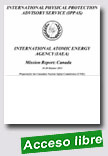 |
International Physical Protection Advisory Service (IPPAS) - Mission Report: Canada
IAEA, 2015, 114 p.
This report presents the results of the International Atomic Energy Agency (IAEA) International Physical Protection Advisory Service (IPPAS) mission conducted in Canada from 19 to 30 October 2015. This is the 68th IPPAS mission conducted by the IAEA since the introduction of this service in 1995. Canada is the 43th country to host an IPPAS mission. Canada is one of the first countries to request that an IPPAS mission include a .
|
comprehensive review of the national nuclear secutiry regime, including all five IPPAS modules
Extraído de: http://www.nuclearsafety.gc.ca/eng/pdfs/IPPAS/Canadas-IPPAS-Mission-Report-2015-eng.pdf
|
 |
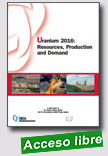
|
Uranium 2016: Resources, Production and Demand
Nuclear Energy Agency (NEA) and the International Atomic Energy Agency (IAEA), 30/11/16, 548 p.
Uranium is the raw material used to produce fuel for long-lived nuclear power facilities, necessary for the generation of significant amounts of baseload low-carbon electricity for decades to come. Although a valuable commodity, declining market prices for uranium in recent years, driven by uncertainties concerning evolutions in the use of nuclear power, have led to the postponement of mine development |
plans in a number of countries and to some questions being raised about future uranium supply. This 26th edition of the "Red Book", a recognised world reference on uranium jointly prepared by the Nuclear Energy Agency (NEA) and the International Atomic Energy Agency (IAEA), provides analyses and information from 49 producing and consuming countries in order to address these and other questions. The present edition provides the most recent review of world uranium market fundamentals and presents data on global uranium exploration, resources, production and reactor-related requirements. It offers updated information on established uranium production centres and mine development plans, as well as projections of nuclear generating capacity and reactor-related requirements through 2035, in order to address long-term uranium supply and demand issues.
Extraído de: http://www.oecd-nea.org/tools/publication?query=&div=&lang=&period=
6m&sort=title&filter=1#p7301
|
 |
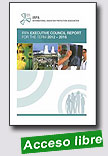 |
IRPA Executive Council Report for the Term 2012 – 2016
International Radiation Protection Association (IRPA), 2016, 20 p.
The International Radiation Protection Association (IRPA) is an independent non-profit association of national and regional radiation protection societies (the Associate Societies - AS).
The Mission Statement of IRPA is as follows: IRPA is the international professional
association for radiation protection. It promotes excellence in the practice of radiation protection through national and
|
regional Associate Societies and radiation protection professionals by providing benchmarks of good practice and enhancing professional competence and networking. It promotes the application of the highest standards of professional conduct, skills and knowledge for the benefit of individuals and society.
Extraído de: http://www.irpa.net/members/3/%7B7EA772AF-BA5A-4DF9-A575-5803A091FC5E%7D/IRPA%20EC%20report%202012-2016.pdf
|
 |
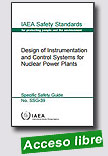 |
Design of Instrumentation and Control Systems for Nuclear Power Plants
IAEA Safety Standards Series, 2016, 161 p.
This publication is a revision and combination of two Safety Guides, IAEA Safety Standards Series No. NS-G-1.1 and No. NS-G-1.3. The revision takes into account developments in instrumentation and control (I&C) systems since the publication of the earlier Safety Guides. The main changes relate to the continuing development of computer applications and the evolution of the methods necessary for their safe,
|
secure and practical use. In addition, account is taken of developments in human factors engineering and the need for computer security. This Safety Guide references and takes into account other IAEA Safety Standards and Nuclear Security Series publications that provide guidance relating to I&C design.
Extraído de: http://www-pub.iaea.org/books/IAEABooks/10838/Design-of-Instrumentation-and-Control-Systems-for-Nuclear-Power-Plants
|
 |
|
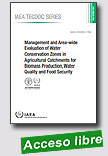
|
Management and Area-wide Evaluation of Water Conservation Zones in Agricultural Catchments for Biomass Production, Water Quality and Food Security
IAEA TECDOC, 2016, 166 p.
This publication summarizes the research work undertaken
as part of a FAO/IAEA coordinated research project (CRP) which aimed to assess and enhance ecosystem services
provided by wetlands, ponds and riparian buffer zones for improving water storage and nutrient use within agricultural catchments. The specific objectives of the CRP were to
|
determine the capacity of water conservation zones for water and nutrient storage, assess nutrient attenuation capacities, assess the link between water and nutrient dynamics and optimize water conservation zones for improving water storage and quality.
Extraído de: http://www-pub.iaea.org/books/IAEABooks/10985/
Management-and-Area-wide-Evaluation-of-
Water-Conservation-Zones-in-Agricultural-Catchments
|
 |
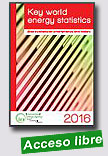 |
Key World Energy Statistics 2016
International Energy Agency (IEA), 2016, 80 p.
Since 1997, the IEA has produced an annual compilation of its most used statistics in a booklet easily accessible to all – the aptly named Key World Energy Statistics (KWES) – and the hugely successful booklet has become a constant companion of energy analysts and policy makers.
Ever increasingly popular, Key World Energy Statistics contains timely, clearly presented data on the supply, transformation and consumption of all major energy sources for the main |
regions of the world. It gives the interested business person, journalist or student access to key statistics on more than 130 countries and regions including energy indicators, energy balances, prices and CO2 emissions as well as energy forecasts. All of the data in the booklet is also available in app form for all major mobile devices...
Extraído de: http://www.iea.org/publications/freepublications/publication/key-world-energy-statistics.html
|
 |
 |
IAEA Safety Standards Brochure
IAEA, 2016, 92 p.
The IAEA Safety Standards Series comprises publications of a regulatory nature covering nuclear safety, radiation protection, radioactive waste management, the transport of radioactive material, the safety of nuclear fuel cycle facilities and management systems. These publications are issued under the terms of Article III of the IAEA’s Statute, which authorizes the IAEA to establish “standards of safety for protection of health and minimization of danger to life and property”.
|
Safety standards are categorized into: Safety Fundamentals, stating the basic objective, concepts and principles of safety; Safety Requirements, establishing the requirements that must be fulfilled to ensure safety; and Safety Guides, recommending measures for complying with these requirements for safety.
Extraído de: http://www-pub.iaea.org/books/SubjectBrochures/sb_ss.pdf
|
 |
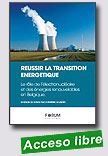 |
Réussir la transition énergétique - Le rôle de l’électronucléaire et des énergies renouvelables en Belgique
Forum Nucléaire (Belgique), Octobre 2016, 41 p.
L’étude menée par le consultant PwC Enterprise Advisory sur la transition énergétique belge aux horizons 2030 et 2050, montre que seule une production d’électricité combinant les énergies renouvelables et le nucléaire permettra d’atteindre les objectifs climatiques européens et les taux de renouvelables retenus par le Bureau fédéral du Plan pour l’évolution du système énergétique belge jusqu’en 2050.
|
A contrario, sans nucléaire, la Belgique connaitra une dégradation considérable de son bilan carbone à l’horizon 2050, et cela malgré le développement massif de sources renouvelables.
En l’absence de capacité nucléaire, les paramètres compétitivité, sécurité d’approvisionnement et CO2 sont en réalité tous mis à mal; il faudrait alors recourir aux importations et aux centrales plus onéreuses. Enfin, l’étude confirme, sans équivoque, que le nucléaire ne
va pas à l’encontre du renouvelable et que les deux sont complémentaires. Cette complémentarité assure une énergie fiable, abordable et durable, comme le veut la stratégie énergétique européenne.
Synthèse étude PwC | Etude PwC press release | Etude complète
Extraído de: https://www.forumnucleaire.be/assets/craft/docs/
FOR00029_PWC_rapport_FR_08_HR_FINAL.PDF
|
 |
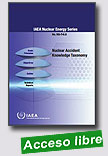 |
Nuclear Accident Knowledge Taxonomy
IAEA Nuclear Energy Series, 2016, 37 p.
There is a need to categorize and structure knowledge related to nuclear accidents. Development of the structure is challenging unless conducted with consideration of the experience of people who were involved in the accidents. In order to support those activities, the IAEA has taken a leading role to assist in the development of a knowledge organization system and associated taxonomy for nuclear accident knowledge domain, which could be implemented and applied |
by Member States’ nuclear organizations. This publication is intended to support Member States activity in managing knowledge from serious nuclear accidents, providing a description of knowledge organization system features, information about the developed system taxonomy, and details on the methodology to organize knowledge in this area.
Extraído de: http://www-pub.iaea.org/books/IAEABooks/10798/Nuclear-Accident-Knowledge-Taxonomy
|
| |
| |
|
|
|
